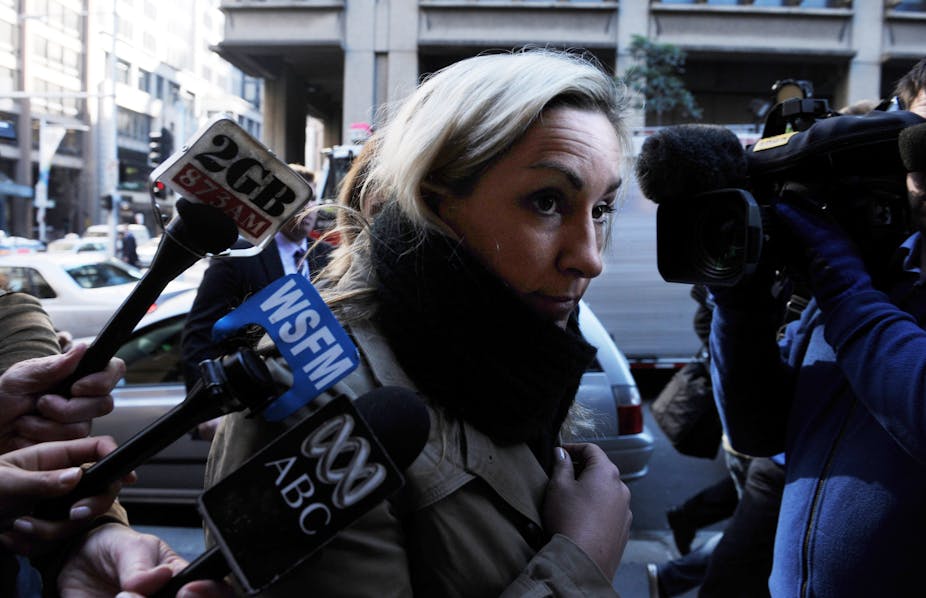In December 2010, Keli Lane, a former champion water polo player, was convicted of the 1996 murder of her two day old daughter, Tegan. The new-born girl was never seen again after leaving the hospital with Lane, who was sentenced to 18 years’ imprisonment last year.
The law treats the crime of abandoning, or killing a child younger one year old under special conditions. It is also the kind of crime that attracts special attention from the media and the public, but many of these crimes will go unheard of, and unsolved.
Tegan Lane’s body was never found, but at least eight newborns were found dead in public places in Australia between 2007 and 2010. These tragic discoveries probably represent only a small fraction of babies abandoned or killed within days of being born.
But are there ways to prevent this kind of crime from happening?
The law against infanticide
Legally, killing a baby within 24 hours of its birth is known as neonaticide. Infanticide relates to killing young children, generally under one year old.
In NSW, Victoria and Tasmania, infanticide is a specific offence or partial defence for murder where a mother kills her young child while her mind is disturbed by the effects of childbirth or breastfeeding. It is also an offence in all Australian jurisdictions to conceal the birth of a child by disposing of its dead body.
International responses
Different countries have tried to prevent neonaticide from happening in the first place in a number of ways. Across the United States, safe haven laws allow a woman to hand over her child to specified authorities without being at risk of prosecution.
And at least 15 countries, including Germany and Canada, have “baby hatches”, generally attached to a hospital, where a person can place an unwanted baby. This triggers an alarm for staff at the hospital to collect the child.
In France, a woman has the option of delivering their baby in hospital and then leaving it behind for adoption without there being any record that she is the mother.
Australian options
A Bill introduced into the South Australian Parliament last year proposes to adopt the first two of the measures above, though arguably the French model might have been more effective in saving Tegan Lane’s life.
Victoria is currently leading research on behalf of the Community and Disability Services Ministerial Council to examine the options available to women with unwanted newborn babies.
To date, safe haven laws have received support from members of the Labor and Liberal parties, as well as the Greens and Family First, the President of the Australian Medial Association and the President of Australian Medical Association.
For and against
Internationally, there has been extensive debate about the three options above. Opponents argue that they have had little impact and fail to prevent child deaths. Advocates, however, generally consider laws effective even if they save only one life.
In reality, little is known about the “effectiveness”, in terms of lives saved, of any of these options. France is currently the only country to collect national data.
Public awareness
But logically, safe haven laws can only work if women know they are in place. If there is no public awareness, women will not be able to use them. In the US, for example, very few jurisdictions provide any public funds to increase awareness of the safe haven option.
Publicity through antenatal services has been proposed as part of the South Australian bill, but this may not reach the target audience; instead, avenues such as social media, school education and posters in public places should be considered.
It has also been suggested that the kinds of women who might use these options are not the same kinds of women who would otherwise kill their baby. In particular, denial of pregnancy is a common characteristic of women who kill their babies, so some women may not register information about the alternatives as applying to them.
Unsurprisingly, the research comparing this in context is very limited. We need to know more about the profile of women who kill their babies, those who abandon them unsafely and those who use the options discussed here.
Another criticism is that these options do nothing to support pregnant women in crisis or examine the reasons they might choose not to keep their baby. Even where counselling services are provided (as is required under the French model), women may later regret their decision to relinquish their child.
Adoption and the right to know
The UN Convention on the Rights of the Child grants children the right to know their parents as far as possible. Some critics, especially in France, have suggested that not knowing one’s genetic origins causes psychological trauma and moral suffering. On the other hand, there is scope in all three models to leave relevant medical or historical information with the child, and a lack of history is clearly a lesser evil than being killed or left to die.
Finally, the safe and legal abandonment of babies who are then put up for adoption placements may fill a gap in the domestic adoption market for people who are socially or medically infertile. Child development is also less likely to be adversely affected in children adopted before the age of one, and local adoptions pose fewer cultural identification issues than with international adoptions, which account for the majority of adoptions in Australia.
Can it be prevented?
We will never know if the options discussed here would have saved Tegan Lane’s life. There are also practical and theoretical problems associated with these options. Obviously, any model adopted will need to be appropriately publicised and data on its operation maintained.
There is also a need for holistic services for women, including counselling, and support for families more generally. However, these models may have a beneficial – if probably limited – impact on child welfare, as well as empowering women who find themselves dealing with an unwanted pregnancy.

